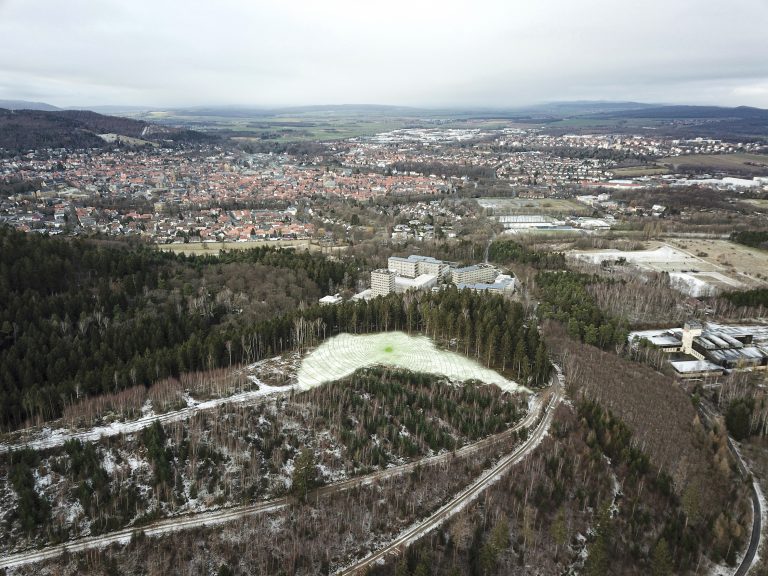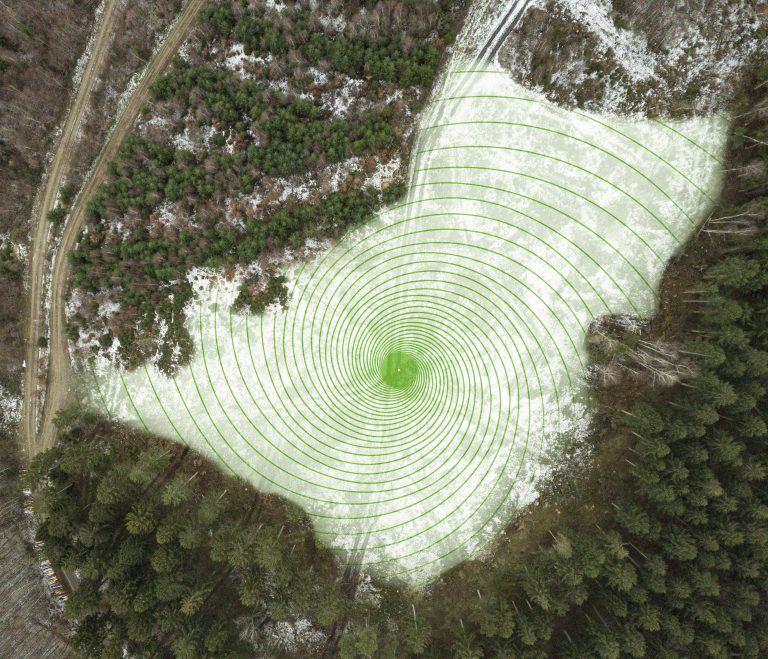Andreas Greiner on his waldfuermorgen in Goslar
The Berlin-based artist Andreas Greiner (* 1979, Aachen), Meisterschüler of Olafur Eliasson, deals with the complex interactions between man and nature in his sculptures and installations. In experimental arrangements, he investigates the human influences on the biological and atmospheric processes of our earth. As Kaiserringstipendiat 2019 the artist has developed a massive new project for Goslar, entitled waldfuermorgen [Forest for Tomorrow].
Andreas, could you please tell us how your project Wald für Morgen in Goslar came about?
waldfuermorgen was initiated by Gertrude Endejan-Gremse and I after my exhibition “Signs of Life” at Mönchehaus Museum Goslar. It is an initiative to pro-actively work with the changing environment and forest around Goslar due to climate change. At this moment about 50% of the trees in Lower Saxony’s biggest city forest (3200 Hectare) located around Goslar is already dead due to drought and a bark beetle infestation. This massive cut into the ecological system and landscape inspired us to establish the association waldfuermorgen e.V. The main idea is to develop almost three hectares of deforested land into a Patenwald („godforest“) for Goslar’s residents. This will be achieved by letting 9000 children and youths each plant a tree to be part of a spiral pattern, while also enabling them to care for their own tree. In a sustainable approach, dead trees of the forest are used to build fences around the new trees to protect them while they are growing. Working in collaboration with the local schools and government, a large focus of the project is also to inspire curiosity and knowledge about forests in the students of Goslar. The project will continue until 2022, and mark the 1100th year since the founding of the city of Goslar.
In your own words, what you would like to achieve in Goslar?
I would like to inspire a new notion and meaning of how we value forests and nature. In the future wood should not only be grown for its economic value in certain industries. We urgently need to acknowledge the fundamental dependency we have on functioning ecosystems such as old growth non-industrialized forest – which are crucial for survival on this planet. Therefore, the living and functioning ecosystem of a rural forest should have a higher economical value than an industrialized forest plantation. It is my hope that our little “Patenwald” will eventually grow freely from the spiral pattern into a mixed and biodiverse forest – part of the city’s forest, open to all, and taken out of industrial use.
Your focus on ecological issues brings together art, science and nature. How can the visual arts help our society to react on ecological and environmental threats?
The art world, including myself, urgently needs a change in its current habits, particularly artists that address ecological issues. The time to create conscious talk about climate change by contextualizing it is over. For years now, the public has had knowledge about the dangers of climate change. Now is the time to act. This is not only true in the art world but in our whole society which needs a new culture of action. The visual arts can help by co-creating new patterns of behavior.


